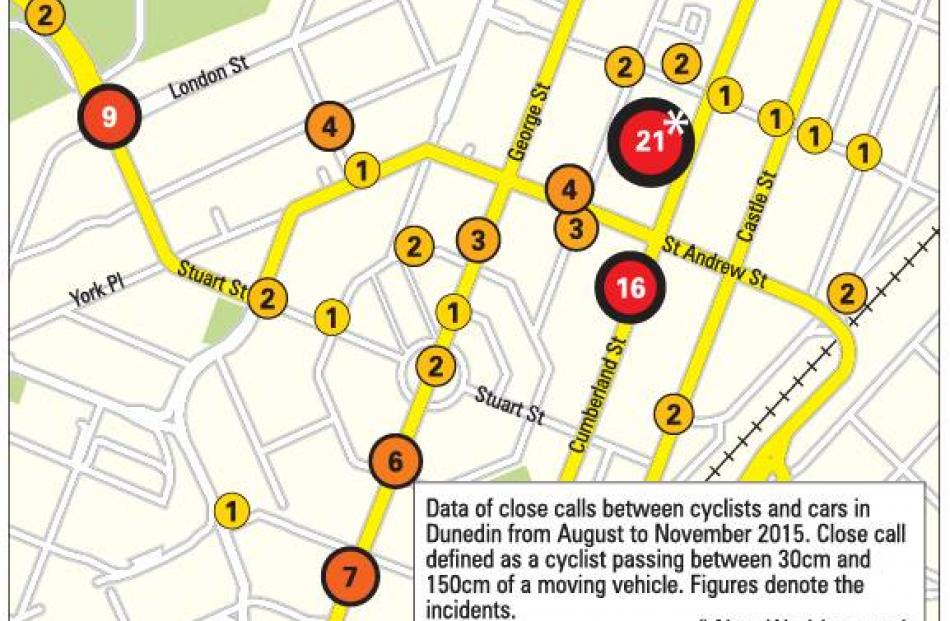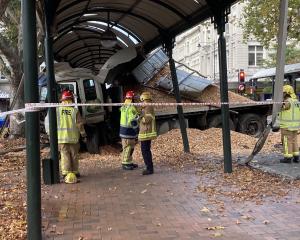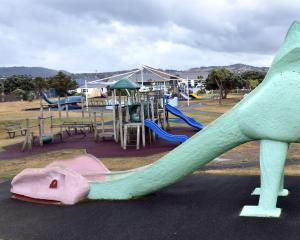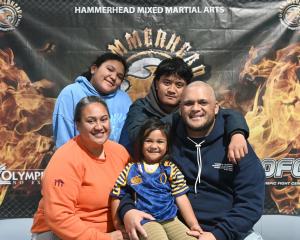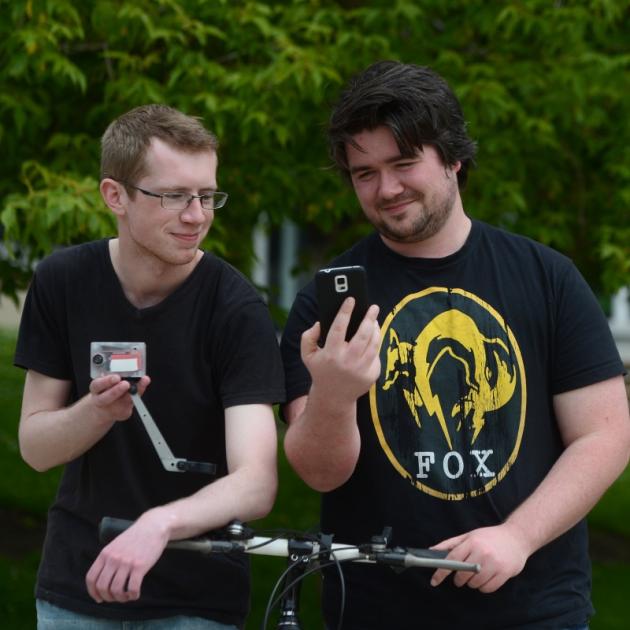
Danger hotspots for Dunedin cyclists have been revealed by new technology developed at Otago Polytechnic.
The technology, which measures ''close calls'' between cyclists and cars, is the final project of two information technology students - Cameron Hill and Zane Unverferth.
The idea for the project initially came from their tutor, who is a cyclist.
Mr Hill said the two students might not have thought up the idea themselves.
''We're not cyclists,'' he said.
But they did recruit cyclists - four of them - who biked around for weeks at a time with a sonar device the two students had fashioned.
The device ''pinged'' every time cyclists passed within 30cm to 150cm of a moving car.
Mr Hill and Mr Unverferth then mapped the data online for their ''client'' - the Dunedin City Council - revealing certain hotspots around Dunedin that were especially dangerous for cyclists.
Some of the hotspots, such as roads around the Octagon, might seem ''quite obvious'', Mr Unverferth said.
But one of their cyclists, fellow polytech student Vaughn Malkin, said looking at the data afterwards was illuminating.
He had been cycling for 20 years, but had never paid much attention to how close to cars he came.
''You become accustomed to it and you tune it out.''
Seeing the close calls on a map made them ''stark'', he said.
And cycling advocate Jon Dean said getting the data to identify those hotspots was ''an amazing opportunity''.
Mr Dean, who serves as the treasurer of bike lobby group Spokes, has committed the organisation to taking on the project ''in any way we possibly can''.
He said the project was important because it provided concrete data to back up the ''anecdotal data'' of cyclists' individual experiences.
The data could then hopefully be used to influence policy, Mr Dean said.
''It would reinforce the evidence that already exists that [protected cycle lanes] are required, especially on places like the one-way system.''
Mr Dean was optimistic about the potential applications of the technology.
''It's not just for Dunedin - it could have applications globally. Anyone could use it.''
The map developed by Mr Hill and Mr Unverferth can be found online at httppublic://story/2016/04/_final_year_bachelor_of_informati_5645aab989.jpgroximal.me.

